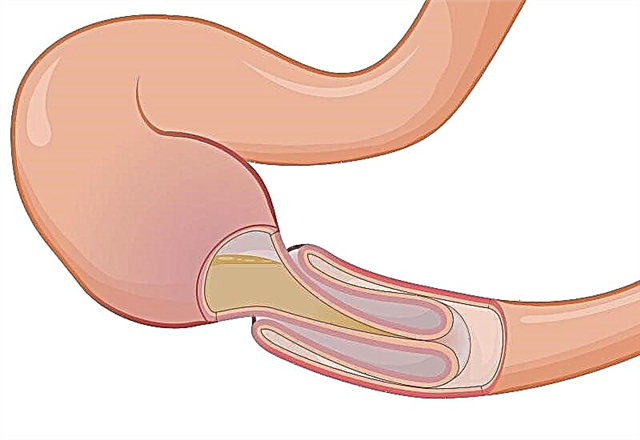
"Paracetamol" can be called one of the most popular antipyretic drugs when it comes to lowering the temperature in a child. Doctors call this medication safe for children and is often prescribed for both fever and pain. Candles are often assigned to the smallest ones.
Release form and composition
Suppositories "Paracetamol" are produced by different pharmaceutical companies - "Altpharm", "Altayvitamins", "Biochemist" and others. All of them contain Paracetamolum as the main component that provides a healing effect to candles. Depending on its amount in one suppository, the following dosages are distinguished:
- 50 mg
- 100 mg
- 250 mg
- 500 mg
In addition to Paracetamolum, such a medicine has only one auxiliary ingredient, represented by a fat base. Thanks to such a base, the candle has a torpedo shape, white-cream or white color, the drug easily enters the anus and dissolves rather quickly inside the intestine.


Operating principle
"Paracetamol" affects the brain tissue (in particular, the centers of pain and temperature regulation) by blocking cyclooxygenase. By influencing the work of such an enzyme, the drug lowers the body temperature and eliminates pains if they are of medium or low intensity. Suppositories do not have a pronounced anti-inflammatory effect.
Indications
Most often, "Paracetamol" in candles is used to bring down the temperature caused by ARVI, chickenpox, measles, flu, mumps, herpes or other viral infection. Medicine effectively combats fever that occurs during inflammatory processescaused by bacteria, such as angina, pyelonephritis or angina. In addition, this medication can also be used with a temperature reaction to vaccination. Since suppositories havei analgesic effect, they can also be used for toothache, joint pain, sore throat, ear and other localization.
At what age are children prescribed?
Suppositories "Paracetamol" should not be used in the neonatal period. If the baby is already 1 month old, then the doctor may prescribe such a medication at a high temperature, but with some reservations. For such small patients, "Paracetamol" is indicated only when the temperature rises, which is a reaction to vaccination. In addition, the drug is used once.
If the baby is already 3 months old, you can use candles without fear. This form of "Paracetamol" can be used up to 12 years of age, choosing the right dosage for a particular child.
Although patients over 6 years old can already be given pills, and children from 3 months to 12 years old are also allowed "Paracetamol" in suspension, the use of suppositories is sometimes preferable:
- First, if the child has nausea, and any drugs taken by mouth provoke an attack of vomiting.
- Secondly, if a small patient does not tolerate any chemical additives present in liquid or tablet form.


Contraindications
Suppositories are not used not only for hypersensitivity to Paracetamol, but also the following situations can be contraindications:
- The appearance of erosive or ulcerative changes in the wall of the digestive tract.
- Gastric or intestinal bleeding.
- Lack of glucose 6 phosphate dehydrogenase.
- Inflammation of the rectum.
Little patients with kidney diseases, bronchial asthma, blood pathologies, liver damage and some other diseases require increased attention from the doctor when prescribing "Paracetamol" in suppositories.
Side effects
Allergic reactions or other negative symptoms, such as nausea or bronchospasm, may appear during treatment with Paracetamol. In this case, the medication is immediately canceled, and the child should be shown to the doctor.

Instructions for use
You can give the following procedure when using suppositories "Paracetamol":
- The child should be laid down and the hands should be washed. Having spread the buttocks and carefully inserting a candle freed from the packaging into the anus, you need to push it inside with your finger.
- So that the use of the suppository does not provoke bowel movement, it is recommended to insert the drug either after an enema or after natural defecation.
- If necessary, the candle can be cut into halves, but the resulting sharp edges are rubbed with your fingers so that they are smoothed.


- "Paracetamol" in suppositories is used 2 to 4 times a day. The interval between the use of the medication should be at least 4 hours.
- To determine the dosage of the drug for a particular baby, you need to know his age and body weight. Doctors calculate a single dose by multiplying the patient's body weight by 10-12 mg, while the child should not receive more than 60 mg / kg of "Paracetamol" per day.
- The average single dosage of "Paracetamol" in candles for babies up to a year is 50-100 mg. Children from 1 to 3 years old put a candle with a dosage of 100 mg or a half of a 250 mg candle. For children 3-5 years old, such a medication is prescribed in a dose of 150-200 mg. A child 5-10 years old is prescribed suppositories of 250 mg of "Paracetamol", and at the age of 10-12, the therapeutic effect will be only from the use of the drug with the highest dosage (500 mg in one suppository).
- The duration of the use of suppositories is recommended to be limited to 5 days if the medication is prescribed for pain, or 3 days if "Paracetamol" is used as an antipyretic agent. Longer treatment should be agreed with the doctor


Overdose
If you accidentally exceed the dose of "Paracetamol" in suppositories (for example, mix up the dosage of the medicine), this will lead to negative symptoms from the digestive tract: lack of appetite, abdominal cramps, nausea, diarrhea and others. If the overdose is significant, then the medication can provoke liver damage. Since it does not develop immediately, and for some time the child may feel good, if the dose is exceeded, a doctor's examination is required.
Combination with other drugs
It is not recommended to simultaneously put "Paracetamol" in suppositories and give the child a suspension or other medicine based on "Paracetamol", as this will increase the risk of overdose. Without a doctor's prescription, it is not worthwhile to alternate "Paracetamol" and an antipyretic drug with a different composition (for example, Nurofen). Also, in the annotation to the candles, many other drugs are noted with which suppositories are not recommended to be combined.
Terms of sale
"Paracetamol" in suppositories, like other forms of this drug, is sold without a prescription. The cost of such a drug is influenced by both the dosage and the manufacturing company. On average, for 10 candles containing 100 mg of the active ingredient, you need to pay 30 rubles.

Storage features
The manufacturer advises to store suppositories at a temperature not exceeding 15 degrees Celsius, so it is best to place them in the refrigerator. The top shelf is suitable for storage, where the medicine cannot be reached by children. Candles usually have a shelf life of 2 years.
Reviews
There are many positive reviews about the use of "Paracetamol" in suppositories in children. Parents like that such a remedy is safer than Ibuprofen preparations, it effectively reduces fever and relieves pain, and does not contain harmful chemicals. The medication is praised and for the opportunity to choose a dosage for a child of different ages.
Among the disadvantages of the drug, a rather long onset of action is mentioned, since the effect of the use of a candle develops after about 1.5-2 hours (the suspension acts in 15-30 minutes). At the same time, the portability of suppositories, according to mothers, is mostly good, and the price is affordable, which is also attributed to the advantages of this form of "Paracetamol".


Analogs
Other preparations of "Paracetamol" in the same dosage form can replace suppositories:
- "Tsefekon D". Such suppositories contain 50 mg of the active substance and can be prescribed from 1 month.
- Children's "Panadol". This medication in the form of suppositories is presented in two dosages (125 and 250 mg). A drug with a lower content of "Paracetamol" is prescribed from 6 months.
- Efferalgan. These suppositories are available in three dosages (80, 150 and 300 mg). The medicine with the smallest amount of "Paracetamol" is allowed from 3 months of age.
Also, a substitute for "Paracetamol" can be "Nurofen" or "Ibuprofen". These medicines with a similar therapeutic effect are produced in candles and are prescribed for children over 3 months old.
All about paracetomol and not only, see the next issue of the program of Dr. Komarovsky.



